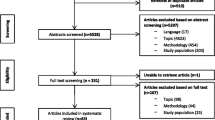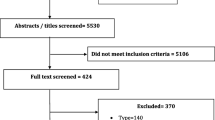Abstract
Purpose
The aim of this study is to investigate the psychometrics of the 12 items of an instrument assessing activities of daily living (ADL) using an item response theory model.
Methods
A total of 648 adults with physical disabilities and having difficulties in ADLs were retrieved from the 2014 Korean National Survey on People with Disabilities. The psychometric testing included factor analysis, internal consistency, precision, and differential item functioning (DIF) across categories including sex, older age, marital status, and physical impairment area.
Results
The sample had a mean age of 69.7 years old (SD = 13.7). The majority of the sample had lower extremity impairments (62.0%) and had at least 2.1 chronic conditions. The instrument demonstrated unidimensional construct and good internal consistency (Cronbach’s alpha = 0.95). The instrument precisely estimated person measures within a wide range of theta values (−2.22 logits < θ < 0.27 logits) with a reliability of 0.9. Only the changing position item demonstrated misfit (χ2 = 36.6, df = 17, p = 0.0038), and the dressing item demonstrated DIF on the impairment type (upper extremity/others, McFadden’s Pseudo R 2 > 5.0%).
Conclusions
Our findings indicate that the dressing item would need to be modified to improve its psychometrics. Overall, the ADL instrument demonstrates good psychometrics, and thus, it may be used as a standardized instrument for measuring disability in rehabilitation contexts. However, the findings are limited to adults with physical disabilities. Future studies should replicate psychometric testing for survey respondents with other disorders and for children.


Similar content being viewed by others
References
Korean Institute for Health and Social Affairs (2014). National Survey on People with Disabilities.
Kim, H.-O., & Joung, K. H. (2007). A study on the needs of health & community services among the disabled at home in rural areas. Journal of Korean Academy of Community Health Nursing, 18(3), 480–491.
Osborn, R., Moulds, D., Squires, D., Doty, M. M., & Anderson, C. (2014). International survey of older adults finds shortcomings in access, coordination, and patient-centered care. Health Affairs, 33(12), 2247–2255. doi:10.1377/hlthaff.2014.0947.
Verbrugge, L. M., & Jette, A. M. (1994). The disablement process. Social Science & Medicine, 38(1), 1–14.
Grotle, M., Brox, J. I., & Vøllestad, N. K. (2005). Functional status and disability questionnaires: What do they assess?: A systematic review of back-specific outcome questionnaires. Spine, 30(1), 130–140. doi:10.1097/01.brs.0000149184.16509.73.
Potkin, S. G. (2002). The ABC of Alzheimer’s disease: ADL and improving day-to-day functioning of patients. International Psychogeriatrics, 14(S1), 7–26. doi:10.1017/S1041610203008640.
Andersen, C. K., Wittrup-Jensen, K. U., Lolk, A., Andersen, K., & Kragh-Sørensen, P. (2004). Ability to perform activities of daily living is the main factor affecting quality of life in patients with dementia. Health and Quality of Life Outcomes, 2(1), 1–7. doi:10.1186/1477-7525-2-52.
Stineman, M. G., & Granger, C. V. (1997). A modular case-mix classification system for medical rehabilitation illustrated. Health Care Financing Review, 19(1), 87–103.
Carter, G. M., Relies, D. A., Ridgeway, G. K., & Rimes, C. M. (2003). Measuring function for medicare inpatient rehabilitation payment. Health Care Financing Review, 24(3), 25–44.
Mackenbach, J. P., Simon, J. G., Looman, C. W., & Joung, I. M. (2002). Self-assessed health and mortality: Could psychosocial factors explain the association? International Journal of Epidemiology, 31(6), 1162–1168. doi:10.1093/ije/31.6.1162.
Buz, J., & Cortés-Rodríguez, M. (2016). Measurement of the severity of disability in community-dwelling adults and older adults: Interval-level measures for accurate comparisons in large survey data sets. British Medical Journal Open, 6(9), e011842. doi:10.1136/bmjopen-2016-011842.
Cook, C., & Pietrobon, R. (2006). Item analysis of the NHANES ADL instrument in a sample of patients reporting frequent severe headaches. Physiotherapy Research International, 11(2), 84–92. doi:10.1002/pri.324.
Cook, C. E., Richardson, J. K., Pietrobon, R., Braga, L., Silva, H. M., & Turner, D. (2006). Validation of the NHANES ADL scale in a sample of patients with report of cervical pain: Factor analysis, item response theory analysis, and line item validity. Disability and Rehabilitation, 28(15), 929–935. doi:10.1080/09638280500404263.
Cieza, A., Oberhauser, C., Bickenbach, J., Jones, R. N., Üstün, T. B., Kostanjsek, N., et al. (2015). The English are healthier than the Americans: Really? International Journal of Epidemiology, 44(1), 229–238. doi:10.1093/ije/dyu182.
Curtin, L., Mohadjer, L., Dohrmann, S., Montaquila, J., Kruszan-Moran, D., Mirel, L., et al. (2012). The national health and nutrition examination survey: Sample design, 1999–2006. Vital and health statistics. Series 2, Data Evaluation and Methods Research, 155, 1–39.
Won, C. W., Rho, Y. G., Kim, S. Y., Cho, B. R., & Lee, Y. S. (2002). The validity and reliability of Korean Activities of Daily Living (K-ADL) scale. Journal of the Korean Geriatrics Society, 6(2), 98–106.
Won, C. W., Rho, Y. G., SunWoo, D., & Lee, Y. S. (2002). The validity and reliability of Korean Instrumental Activities of Daily Living (K-IADL) scale. Journal of the Korean Geriatrics Society, 6(4), 273–280.
Shin, S.-M., & Chun, J.-S. (2011). A study on donning and doffing independence of the person with disabilities on upper-limbs. Research Journal of the Costume Culture, 19(1), 42–53.
Hambleton, R. K. (1991). Fundamentals of item response theory (Measurement methods for the social sciences series). Newbury Park: Sage Publications.
Wright, B. D., & Stone, M. H. (1979). Best test design. Chicago: Mesa Press.
Bond, T. G., & Fox, C. M. (2001). Applying the Rasch model fundamental measurement in the human sciences. Mahwah: Lawrence Erlbaum Associates Inc.
De Ayala, R. J. (2013). The theory and practice of item response theory. New York: Guilford.
Linacre, J. M. (1998). Detecting multidimensionality: which residual data-type works best? Journal of Outcome Measurement, 2(3), 266–283.
Velozo, C. A., Kielhofner, G., & Lai, J. S. (1999). The use of Rasch analysis to produce scale-free measurement of functional ability. American Journal Occupational Therapy, 53(1), 83–90.
Muthén, L. K., & Muthén, B. O. (2015). Mplus. Los Angeles: Muthén & Muthén.
Reeve, B. B., Hays, R. D., Bjorner, J. B., Cook, K. F., Crane, P. K., Teresi, J. A., et al. (2007). Psychometric evaluation and calibration of health-related quality of life item banks: plans for the Patient-Reported Outcomes Measurement Information System (PROMIS). Medical Care, 45(5 Suppl 1), S22–S31. doi:10.1097/01.mlr.0000250483.85507.04.
Tabchnick, B. G., & Fidell, L. S. (2006). Using multivariate statistics. Boston: Allyin & Bacon.
Hays, R. D., Morales, L. S., & Reise, S. P. (2000). Item response theory and health outcomes measurement in the 21st century. Medical Care, 38(9 Suppl), II28.
De Ayala, R. J. (2009). The theory and practice of item response theory. Methodology in the social sciences. New York: Guilford Press.
Orlando, M., & Thissen, D. (2003). Further investigation of the performance of S − X 2: An item fit index for use with dichotomous item response theory models. Applied Psychological Measurement, 27(4), 289–298. doi:10.1177/0146621603027004004.
Dodd, B. G., Koch, W. R., & De Ayala, R. J. (1989). Operational characteristics of adaptive testing procedures using the graded response model. Applied Psychological Measurement, 13(2), 129–143.
Adams, R. J. (1987). Adaptive testing, information, and the partial credit model. Melbourne: University of Melbourne.
Biddle, R. E. (1993). How to set cutoff scores for knowledge tests used in promotion, training, certification, and licensing. Public Personnel Management, 22, 63–79.
McHorney, C. A., & Tarlov, A. R. (1995). Individual-patient monitoring in clinical practice: are available health status surveys adequate? Quality of Life Research, 4(4), 293–307.
Holland, P. W., & Wainer, H. (2012). Differential item functioning. Princeton: Routledge.
Choi, S. W., Gibbons, L. E., & Crane, P. K. (2016). Logistic regression differential item functioning using IRT. Retrieved from https://cran.r-project.org/web/packages/lordif/lordif.pdf. Accessed 2 July 2017.
Choi, S. W., Gibbons, L. E., & Crane, P. K. (2011). lordif: An R package for detecting differential item functioning using iterative hybrid ordinal logistic regression/item response theory and monte carlo simulations. Journal of Statistical Software, 39(8), 1–30.
Cai, L., Thissen, D., & du Toit, S. H. C. (2011). IRTPRO for Windows (21st ed.). Lincolnwood: Scientific Software International.
SAS Institute Inc. (2015). SAS for Windows (94th ed.). Cary: SAS Institute.
Granger, C. V., Hamilton, B. B., Keith, R. A., Zielezny, M., & Sherwin, F. S. (1986). Advances in functional assessment for medical rehabilitation. Topics in Geriatric Rehabilitation, 1(3), 59–74.
Velozo, C. A., Byers, K. L., Wang, Y. C., & Joseph, B. R. (2007). Translating measures across the continuum of care: using Rasch analysis to create a crosswalk between the Functional Independence Measure and the Minimum Data Set. Journal of Rehabilitation Research and Development, 44(3), 467–478.
Granger, C. V., Hamilton, B. B., Linacre, J. M., Heinemann, A. W., & Wright, B. D. (1993). Performance profiles of the functional independence measure. American Journal of Physical Medicine and Rehabilitation, 72(2), 84–89.
Embretson, S. E., & Reise, S. P. (2013). Item response theory. London: Psychology Press.
Austin, P. C., Escobar, M., & Kopec, J. A. (2000). The use of the Tobit model for analyzing measures of health status. Quality of Life Research, 9(8), 901–910.
Spector, W. D., & Fleishman, J. A. (1998). Combining activities of daily living with instrumental activities of daily living to measure functional disability. Journals of Gerontology, 53(1), S46–S57.
Cabrero-Garcia, J., & Lopez-Pina, J. A. (2008). Aggregated measures of functional disability in a nationally representative sample of disabled people: analysis of dimensionality according to gender and severity of disability. Quality of Life Research, 17(3), 425–436. doi:10.1007/s11136-008-9313-x.
Linacre, J. (2010). Two perspectives on the application of Rasch models. European Journal of Physical and Rehabilitation Medicine, 46(2), 309–310.
Merbitz, C., Morris, J., & Grip, J. C. (1989). Ordinal scales and foundations of misinference. American Journal of Physical Medicine and Rehabilitation, 70(4), 308–312.
Author information
Authors and Affiliations
Corresponding author
Ethics declarations
Conflict of interest
Ickpyo Hong, Mi Jung Lee, Moon-Young Kim, and Hae Yean Park declare that they have no conflict of interest.
Ethical approval
All procedures performed in studies involving human participants were in accordance with the ethical standards of the institutional and/or national research committee and with the 1964 Helsinki Declaration and its later amendments or comparable ethical standards. This study was exempted by the Institutional review boards (IRB) of Yonsei University because the research is a study of an existing dataset, the 2014 Korean National Survey on People with Disabilities which is publicly available. The study dataset is de-identified, such that subjects cannot be identified directly, or through identifiers linked to the subjects.
Informed consent
Not applicable.
Electronic supplementary material
Below is the link to the electronic supplementary material.
Rights and permissions
About this article
Cite this article
Hong, I., Lee, M.J., Kim, M. et al. Item-level psychometrics of the ADL instrument of the Korean National Survey on persons with physical disabilities. Qual Life Res 26, 2867–2875 (2017). https://doi.org/10.1007/s11136-017-1637-y
Accepted:
Published:
Issue Date:
DOI: https://doi.org/10.1007/s11136-017-1637-y




